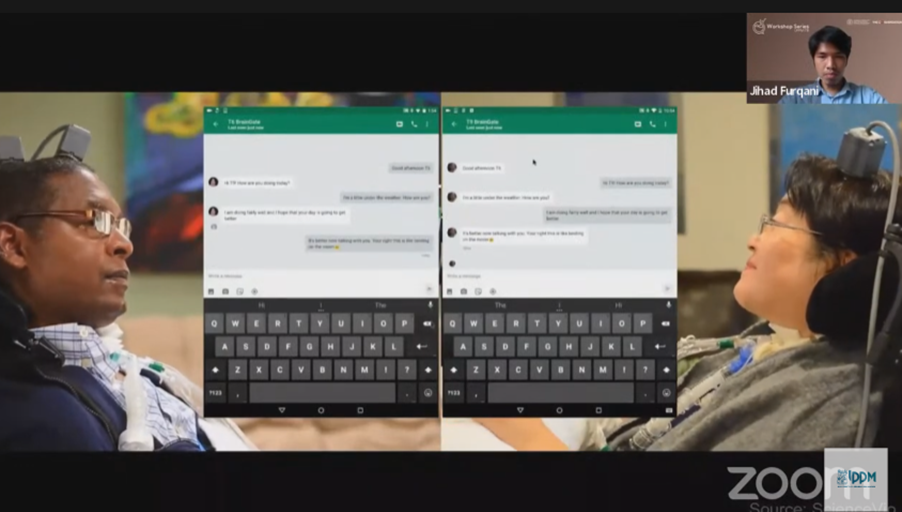Brain-Machine Interfaces, Hope and Solution for Brain Impairment Victim’s Livelihood
By Adi Permana
Editor Adi Permana

BANDUNG, itb.ac.id — The advancing development of science and technology has borne various solutions to overcome human limitations. Many innovations and technologies have been invented to help humans coping with disabilities from serious illness such as paralysis induced by brain impairment, for example amyotrophic lateral sclerosis (ALS), spinal cord injury (SCI), and stroke. To help humans face these assortment of diseases, the Brain Machine Interface was created.
The Institute of Research and Community Services Institut Teknologi Bandung (IRCS ITB) held a Workshop Series IRCS ITB Volume 8 on 2022 with the theme of “Brain-Machine Interfaces: Controlling Devices with Mind”. The materials of this event was delivered by Nur Ahmadi, Ph.D, Research Professor of the Artificial Intelligence Centre, School of Electrical Engineering and Informatics, Institut Teknologi Bandung, on Wednesday (31/8/2022).
Brain-machine interface (BMI) is an information translation device, converting neural signals to instructions for software or external hardware such as a computer or robotic arms. BMI is often used as a life support device for individuals with motor or sensory impairment.
“BMI technology can detect neural activities through a very tiny sensor implanted on the brain. The sensor will detect spikes or brain signals that transgress a certain limit,” described Nur. BMI technology mainly utilize input signals in the form of single unit activity (SUA).
“However, SUA possesses various weaknesses such as long-term instability that degrades the performance and accuracy of the BMI technology. Furthermore, SUA processing is very complex. To analyze an instruction, researchers must at least classify 150 single neuron activities and consequently resort to a sluggish process with inefficient energy expenses,” explained Nur.

In order to overcome these weaknesses, Nur and fellow researchers from the Centre of Artificial Intelligence STEI ITB invented an entire spiking activity (ESA) as a simpler and stabler alternative signal.
To prove the effectivity and credibility of ESA in comparison to SUA, a monkey was used as an experimental subject. “The monkey was instructed to follow cursor movements on a computer. Afterwards, the monkey’s finger motion and brain signal were recorded simultaneously and processed to obtain both ESA and SUA signals that can predict the cursor’s movement,”she added.
After more than 10 months of research, she concluded that the ESA signals produced much more accurate and stable prediction of the cursor’s movement as to SUA signals.
The result and evidence from ESA and BMI technology allow a possibility of human intercommunication through chat application using keyboards controlled by the user’s mind. Moreover, this technology also helps its users to control robotic arms for drinking. “BMI technology can change the life of amyotrophic lateral sclerosis (ALS), spinal cord injury (SCI) and stroke patients. In other words, BMI technology is a possible hope and solution for brain impairment sufferers,” concluded Nur.
Reporter: Yoel Enrico Meiliano (Food Engineering, 2020)
Translator: Firzana Aisya (Bioengineering, 2021)

.jpg)
.jpg)
.jpg)
.jpg)
.png)


